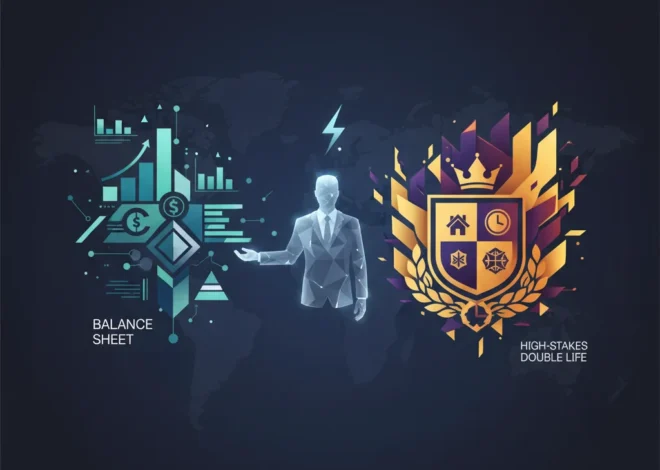
The Unseen Collision: How Autonomous Vehicles Are Reshaping China’s Economy and What It Means for Global Investors
On the sprawling highways and bustling city streets of China, a quiet revolution is underway. It doesn’t involve protests or political upheaval, but something far more fundamental to the modern economy: the replacement of human labor with intelligent machines. Fleets of autonomous trucks and robotaxis, bearing the logos of tech giants like Baidu and Pony.ai, are no longer science fiction. They are a rapidly expanding reality, and they are on a direct collision course with one of the largest workforces on the planet: professional drivers.
This technological leap forward, while a marvel of engineering, heralds a profound economic and social challenge. For investors, business leaders, and anyone involved in global finance, what’s happening in China is more than a regional story. It’s a live-fire test case for the future of work in the age of artificial intelligence—a preview of a disruption that will ripple through every sector of the global economy. The central question is no longer *if* automation will displace jobs, but *how* we will manage the fallout when it does.
The Dragon’s Bet: China’s Aggressive Push into Autonomy
China has strategically positioned itself as the world’s preeminent laboratory for autonomous vehicle (AV) technology. This isn’t by accident. It’s the result of a concerted push from Beijing, which sees leadership in AI and robotics as critical to its future economic dominance. The government has provided a fertile ground for innovation through supportive policies, massive infrastructure investment, and the designation of numerous cities as official testing zones.
The scale of this experiment is staggering. Companies like Baidu, with its Apollo Go service, and Toyota-backed Pony.ai are already operating commercial robotaxi services in major metropolitan areas. In the logistics sector, the economic incentive is even more compelling. Autonomous trucks promise to slash operating costs, increase efficiency by running 24/7, and improve safety. For a nation that functions as the world’s factory, these are irresistible advantages.
The numbers paint a stark picture of the human workforce at risk. China is home to an estimated 16 million truck drivers, a group that forms a critical backbone of the country’s supply chain. When you add taxi drivers, ride-hailing operators, and delivery personnel, the number swells into the tens of millions. These are not just jobs; they are livelihoods that support entire families and communities. The transition to autonomy, while gradual, puts this entire ecosystem on notice.
An Economic Model in Transition: The Business Case for Automation
From a purely financial perspective, the argument for AVs is powerful. For logistics companies and mobility providers, labor is one of the single largest operational expenditures. Automating this function presents an opportunity to fundamentally re-engineer their cost structure, boosting margins and creating a significant competitive advantage. This is a classic example of how financial technology and operational technology converge to reshape an industry.
Let’s compare the two models from a business leader’s or investor’s point of view:
| Factor | Human Driver Model | Autonomous Vehicle Model |
|---|---|---|
| Labor Costs | High and recurring (salaries, benefits, insurance). Subject to wage inflation and labor laws. | High initial capex, but significantly lower operational costs. No salaries or benefits. |
| Operational Efficiency | Limited by human factors: driving hour regulations, breaks, fatigue. Typically 8-10 hours/day. | Capable of near 24/7 operation, stopping only for fuel/charging and maintenance. Drastic increase in asset utilization. |
| Safety & Insurance | Reliant on human skill and attention. Prone to human error, which accounts for over 90% of accidents. | Aims to be statistically safer by eliminating human error. Potential for significantly lower insurance premiums. |
| Scalability | Limited by the availability of a skilled labor pool. Subject to driver shortages. | Highly scalable. Fleet expansion is limited by capital and vehicle production, not human resources. |
This table illustrates why the C-suite and stock market investors are so bullish on autonomy. It represents a paradigm shift in the economics of transportation. The transition from an operational expense (Opex) heavy model to a capital expense (Capex) heavy one has massive implications for company valuations, financial planning, and the entire ecosystem of banking and finance that supports the industry.
The Social Safety Net: A Bridge to Nowhere?
The most alarming aspect of this transition, as highlighted in the Financial Times report, is the glaring absence of a robust social safety net in China. Unlike many Western nations with more established unemployment benefits, retraining programs, and social welfare systems, China’s framework is relatively thin. For a displaced 45-year-old truck driver, the path to a new, comparable-paying job is anything but clear. This creates a volatile social equation.
Beijing is caught in a difficult balancing act. On one hand, its “Made in China 2025” initiative prioritizes becoming a high-tech powerhouse. On the other, the Communist Party’s primary mandate is maintaining social stability. Mass unemployment among a demographic of millions of working-class men could be a recipe for significant unrest. This internal conflict between promoting disruptive technology and preserving social harmony is the central tension in China’s economic story for the next decade.
For investors, this isn’t just an ethical or social concern; it’s a material risk. The widespread adoption of AVs could be slowed or hampered by regulatory backlash if social instability becomes too great. Public sentiment could turn against the very companies pioneering this technology, impacting their stock market performance and ability to operate. Therefore, analyzing a company’s exposure to this social risk is becoming as important as analyzing its balance sheet.
Global Ripples and the Investment Thesis
It’s a mistake to view this as a uniquely Chinese problem. It’s a global preview. The technologies and business models being perfected in China will be exported worldwide. The United States, Europe, and other developed nations face the exact same dilemma, albeit with different social and political contexts. Watching how China navigates this challenge provides invaluable insights for global investors and policymakers.
The investment implications are multi-faceted:
- Direct Technology Plays: Investing in the companies building the AV technology itself—the software (AI, machine learning), the hardware (sensors, chips), and the manufacturers. This includes not only the AV developers but also the entire supply chain.
- Second-Order Beneficiaries: Looking at industries that will be transformed. This includes logistics real estate (warehouses can be located further from urban centers), e-commerce (delivery costs plummet), and data infrastructure (AVs generate immense amounts of data).
- The Rise of New Financial Services: The shift to AVs will create new opportunities in fintech and banking. Fleet management will require new financing and insurance products. The data generated could fuel new trading strategies and economic indicators. Even blockchain technology could play a role in securing vehicle-to-vehicle communication and transaction data.
- ESG and Impact Investing: There is a growing demand for investment strategies that consider the social impact of technological disruption. Companies that demonstrate a clear plan for managing labor transitions, retraining workers, or contributing to community resilience may command a premium from ESG-conscious investors.
The key takeaway is that the AV revolution is not just a technological story; it’s a story about economics, finance, and societal change. The apathetic investor sees only a new gadget. The savvy investor sees the reconfiguration of entire industries and the emergence of a new economic paradigm.
Beyond the Boarding Pass: Ryanair's Digital Gambit and Its Ripple Effect on Finance and Investing
The Road Ahead: A Call for Proactive Strategy
The driverless truck cruising down a Chinese highway is a potent symbol of our economic future. It represents incredible progress, efficiency, and potential. But it also represents a formidable challenge to our social structures and a threat to the livelihoods of millions. As this technology matures, the pressure on governments and corporations to manage the transition will intensify. The concern is that this will happen without a guaranteed safety net, leaving millions behind.
For those in the world of finance and investing, the task is twofold. First, to identify and capitalize on the immense opportunities this technological shift presents. Second, and just as importantly, to understand and mitigate the profound risks associated with the creative destruction it will unleash. The future of the global economy may very well be written on the roads of China, and it’s a future that will be driven by algorithms, not by people.


